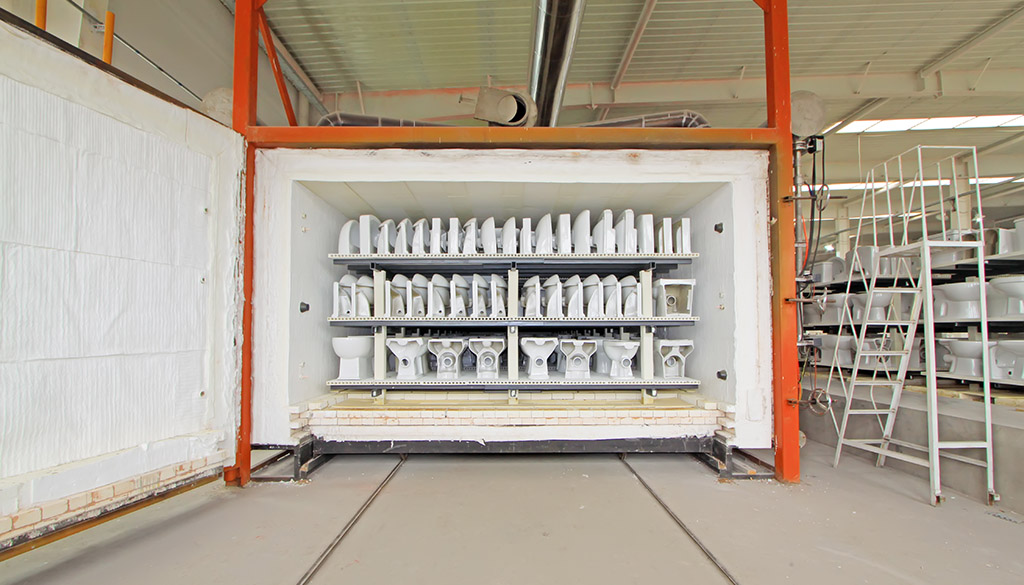Ceramic Industry
Refractory materials are essential for the ceramics industry, providing high-temperature resistance to the kilns used in the firing and sintering processes, ensuring efficient and continuous production of high-quality ceramics.
Refractories for the ceramic industry

Refractory materials are materials that have a high melting point and are used in applications where high temperatures are encountered, such as in ceramic kilns. These materials are typically used as linings, coatings, or insulators to protect the kiln from damage due to heat, abrasion, or chemical corrosion.
Some common refractory materials used in ceramic kilns include:
Fire bricks: These are bricks made from refractory clay and are used as the lining for the interior of the kiln. They have a high resistance to thermal shock and can withstand temperatures up to 1800°C.
Refractory castables: These are mixtures of refractory aggregates, binders, and additives that are cast into shapes and then fired in the kiln. They are used to line the kiln or as a backup lining for fire bricks.
Ceramic fibers: These are made from alumina, silica, or zirconia and are used as insulation in the kiln. They have a low thermal conductivity and can withstand temperatures up to 1400°C.
Refractory coatings: These are applied to the surface of the kiln to protect it from chemical attack or abrasion. They are made from a variety of materials, including alumina, zirconia, and silicon carbide.
Refractory mortars: These are used to join fire bricks or other refractory materials together. They are made from a mixture of refractory aggregates and binders and are designed to withstand high temperatures and thermal shock.

